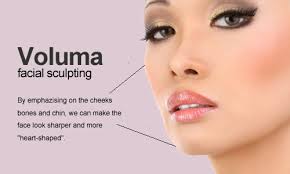The one area of the face, besides the lip and nasolabial folds, that injectable fillers can provide a real rejuvenative effect is in the midface specifically the cheeks. While injectable fillers have been used for decades all over the face, their extensive and widespread use for facial voluminization is relatively new. A wide variety of injectable filler types have been used in the cheeks with variable degrees of success and some aesthetic complications but none of them have been clinically studied and FDA approved for midface enhancement.

Voluma was injected into patients with a variety of volume defects of the midface including cheek concavity, tear troughs, nasojugal folds, a prejowl sulcus and visibility of the musculature and prominence of bony landmarks. The injection areas identified by Hinderer’s intersecting lines were the anteromedial cheek, submalar and the zygomatic arch areas and included volumes in the 2cc range. While the clinical trial was done using a needle injection technique, the use of a microcannulas can avoid any rare adverse vascular events.

While there are a lot of injectable filler products available, only Voluma is officially FDA-approved and formally studied for midface volume enhancement. That being said, other fillers are used such as Radiesse and Sculptra. But as an HA filler with its superior track record in terms of safety and a low rate of complications, Voluma is a valuable addition to existing injectable filler options.
Dr. Barry Eppley
Indianapolis, Indiana


